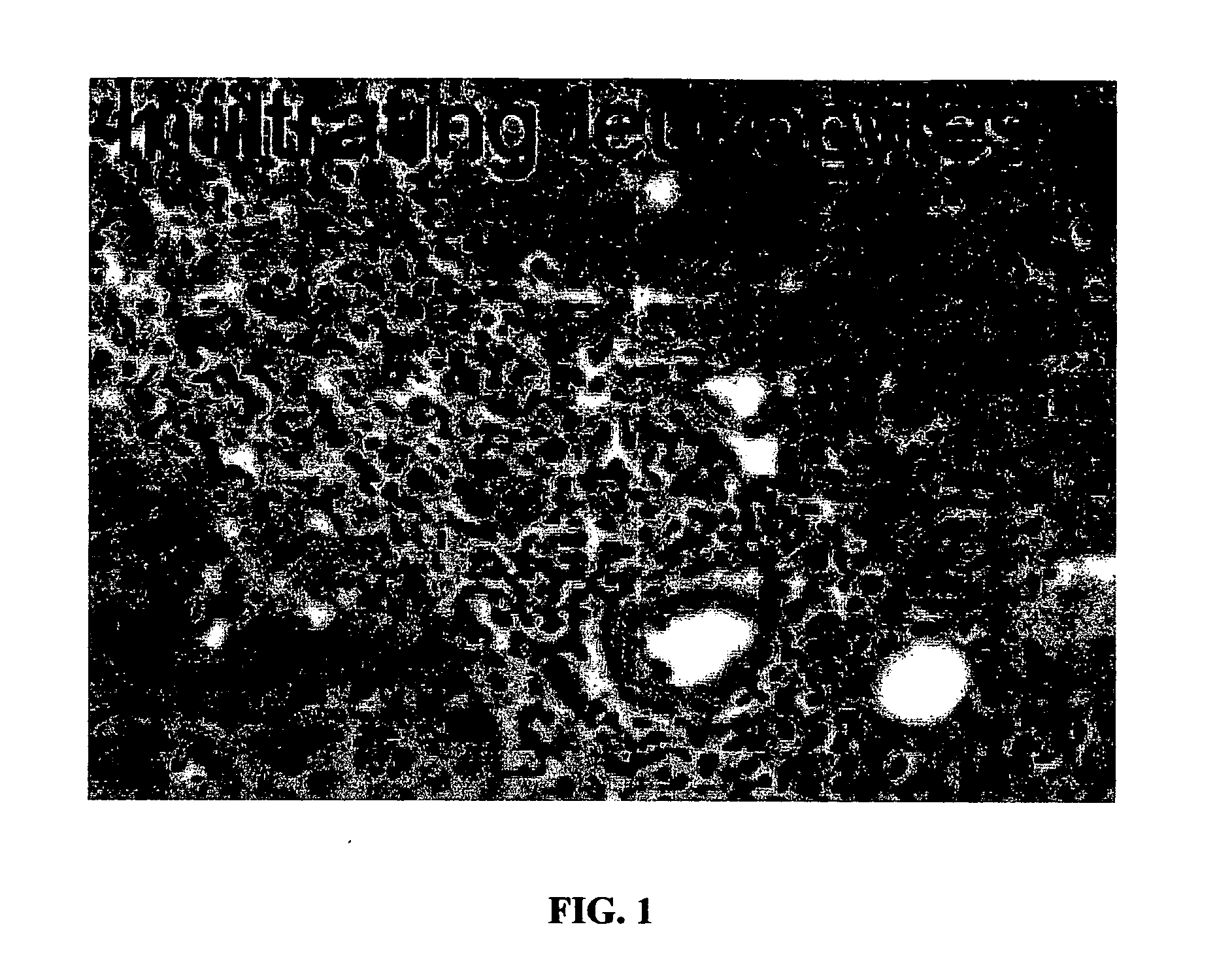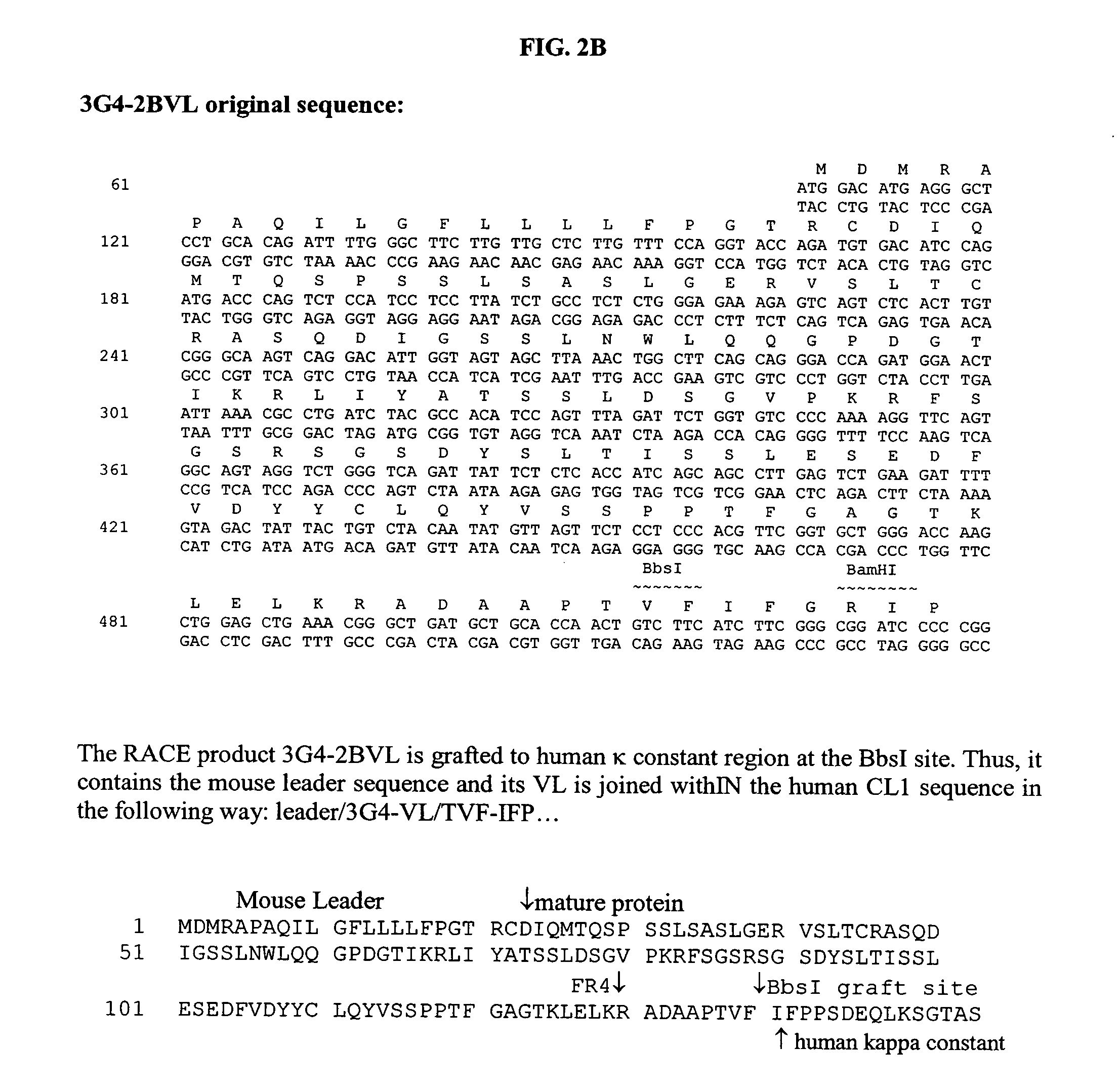Constructs binding to phosphatidylserine and their use in disease treatment
a technology of phosphatidylserine and binding to phosphatidylserine, which is applied in the field of phosphatidylserine biology and to treat tumors and viral infections, can solve the problems of affecting the effect of chemotherapeutic agents, so as to increase the function of host effectors and enhance their destruction
- Summary
- Abstract
- Description
- Claims
- Application Information
AI Technical Summary
Benefits of technology
Problems solved by technology
Method used
Image
Examples
example i
[0656] Tumor Treatment with Anti-VCAM-1-tTF Coaguligand
[0657] The present example shows the specific coagulation of tumor vasculature in vivo that results following the administration of a tumor vasculature-targeted coagulant (“coaguligand”) to tumor-bearing animals and the resultant anti-tumor effects. In this coaguligand, an antibody directed to VCAM-1 (vascular endothelial adhesion molecule-1, VCAM-1) is used as a targeting agent to deliver truncated Tissue Factor (tTF), a modified form of a human coagulant, to tumor vasculature.
[0658] The MK2.7 hybridoma, secreting a rat IgG1 antibody against murine VCAM-1, was obtained from the American Type Culture Collection (ATCC, Rockville, Md.; ATCC CRL 1909). The R187 hybridoma, secreting a rat IgG1 antibody against murine viral protein p30 gag, was also obtained from the ATCC, and was used as an isotype matched control for the anti-VCAM-1 antibody.
[0659] The blood vessels of the major organs and a tumor from mice bearing subcutaneous ...
example ii
[0669] Phosphatidylserine Expression on Tumor Blood Vessels
[0670] To explain the lack of thrombotic effect of anti-VCAM-1•tTF on VCAM-1 positive vasculature in heart and lungs, certain of the inventors developed a concept of differential aminophospholipid and anionic phospholipid, e.g. PS and PE, localization between normal and tumor blood vessels. Specifically, they hypothesized that endothelial cells in normal tissues segregate aminophospholipids and anionic phospholipids, e.g. PS and PE, to the inner surface of the plasma membrane phospholipid bilayer, where PS is unable to participate in thrombotic reactions; whereas endothelial cells in tumors translocate aminophospholipids and anionic phospholipids to the external surface of the plasma membrane, where PS can support the coagulation action of the coaguligand. PS expression on the cell surface allows coagulation because it enables the attachment of coagulation factors to the membrane and coordinates the assembly of coagulation ...
example iii
Annexin V Blocks Coaguligand Activity
[0679] The present example provides further evidence of the role of surface PS expression in coaguligand activity from studies using the high affinity PS binding ligand, annexin V, to block PS function in vitro and in vivo.
A. Annexin V Blocks Coaguligand Activation of Factor X In Vitro
[0680] The ability of Annexin V to affect Factor Xa formation induced by coaguligand was determined by a chromogenic assay. IL-1α-stimulated bEnd.3 cells were incubated with anti-VCAM-•tTF and permeabilized by saponin. Annexin V was added at concentrations ranging from 0.1 to 10 μg / ml and cells were incubated for 30 min. before addition of diluted Proplex T. The amount of Factor Xa generated in the presence or absence of Annexin V was determined. Each treatment was performed in duplicate and repeated at least twice.
[0681] The need for surface PS expression in coaguligand action is further indicated by the inventors' finding that annexin V, which binds to PS wit...
PUM
 Login to View More
Login to View More Abstract
Description
Claims
Application Information
 Login to View More
Login to View More - R&D
- Intellectual Property
- Life Sciences
- Materials
- Tech Scout
- Unparalleled Data Quality
- Higher Quality Content
- 60% Fewer Hallucinations
Browse by: Latest US Patents, China's latest patents, Technical Efficacy Thesaurus, Application Domain, Technology Topic, Popular Technical Reports.
© 2025 PatSnap. All rights reserved.Legal|Privacy policy|Modern Slavery Act Transparency Statement|Sitemap|About US| Contact US: help@patsnap.com



